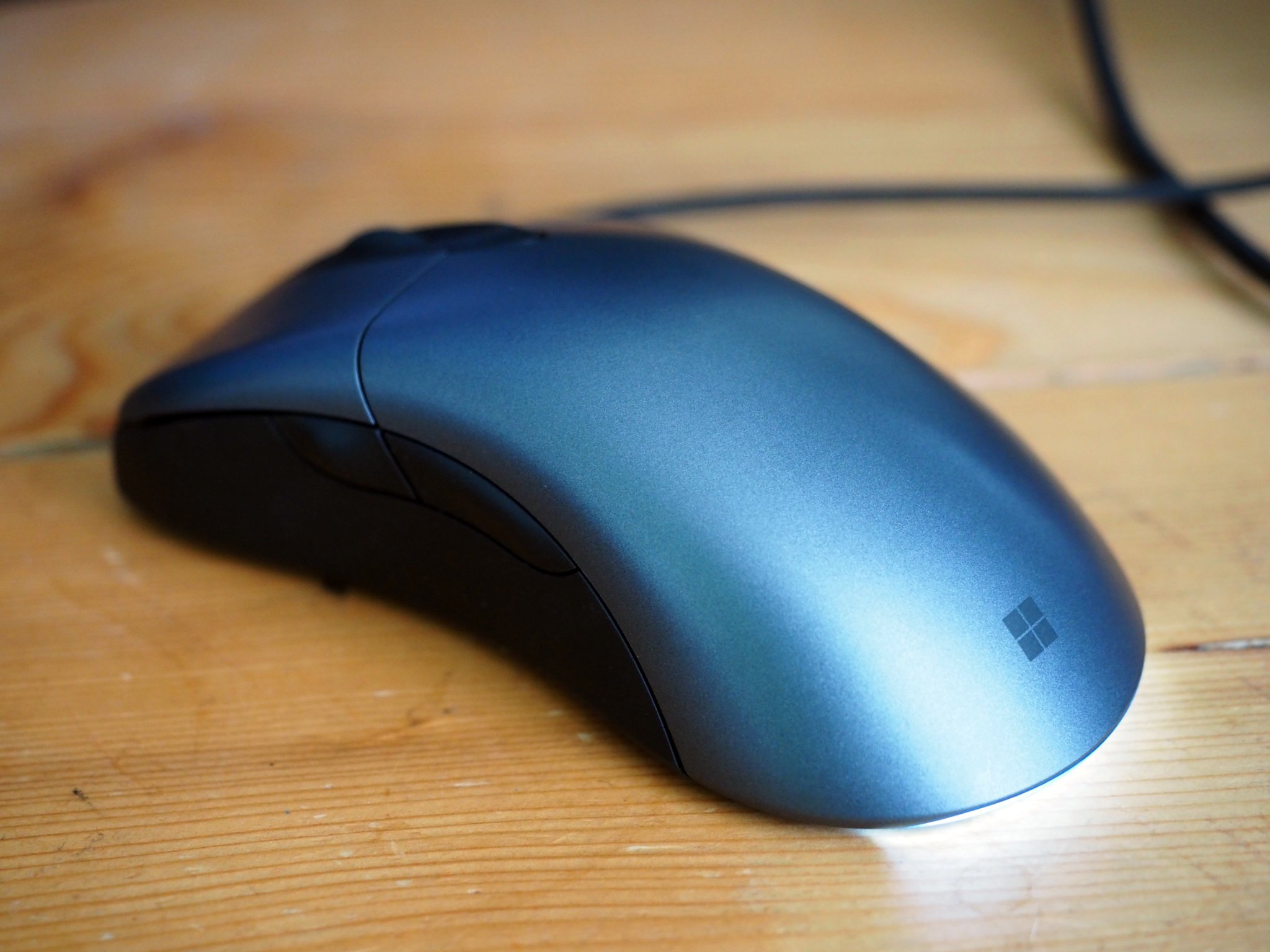Microsoft design director on building a more intelligent IntelliMouse
Microsoft's new Classic IntelliMouse shares a rich history of design DNA with its predecessors.

Microsoft last year had gadget geeks aflutter with news that it was bringing back its classic IntelliMouse with a modern take on the iconic peripheral. Though the $40 Classic IntelliMouse has been updated with a more modern look, you can still see elements of the original's design DNA throughout. In a new blog post, Microsoft's Devices Design Director Simon Dearsley talks about the legacy of the IntelliMouse and how the company carried that forward for the latest version.
The new revamped IntelliMouse is based on the IntelliMouse Explorer 3.0, which was first released in 2003 and was last sold in 2012. But even that version had a strong legacy to build off of; the original was released in 1996 and introduced the scroll wheel, while the series continued to iterate with an optical sensor and a tail light in 1999.
Microsoft's Simon Dearsley on the Classic IntelliMouse
According to Dearsley, the IntelliMouse 3.0 was the high water mark of the series, which explains its long life. From his blog post:
This all culminated in 2003 when we introduced the Intellimouse 3.0: it had incredible ergonomics with its light weight, sculpted finger rests, and elastomer skirt for amazing comfort and rapid movement and repositioning. The sensor really set the standard at the time for precision and accuracy. This all made the Intellimouse 3.0 a huge hit with gamers and creative professionals alike.
As for why Microsoft saw now as the right time to jump in and refresh the IntelliMouse, Dearsley says it all comes down to timing around tracking and switch technology, as well as price:
We saw this as an opportunity to improve on an icon by updating it with modern technology. We know how important the Intellimouse range has been and wanted to take a moment to reflect on the history of it and do something special for our fans.
For the updated design, Dearsley says that Microsoft was careful to maintain a feel that IntelliMouse fans would recognize, but while improving on tracking and the feel of the buttons. On the inside, everything is new, from the mechanical engineering to improved build quality:
We were really careful to keep the same Omron switches for the left and right click, and have added three Kailh switches for the middle wheel button and side buttons. We also made a huge improvement to the two side buttons. They now feel snappy and crisp and have just the right force and click to them.
Going forward, Dearsley is mum on what to expect from future Microsoft mice, but he says the company will continue to focus on performance innovations and working with the community to understand what its users want to see:
All the latest news, reviews, and guides for Windows and Xbox diehards.
Continuing to innovate is really key for us as we want to build products that make a meaningful difference. Take for instance the Precision mouse scroll wheel and the magnetic detent. From the outside, they might look like minor changes, but they really make a difference to the way you use the mouse
If you're curious about the Microsoft Classic IntelliMouse, it's available now for $40 (£39.99 or €44.99) via the Microsoft Store.

Dan Thorp-Lancaster is the former Editor-in-Chief of Windows Central. He began working with Windows Central, Android Central, and iMore as a news writer in 2014 and is obsessed with tech of all sorts. You can follow Dan on Twitter @DthorpL and Instagram @heyitsdtl.
